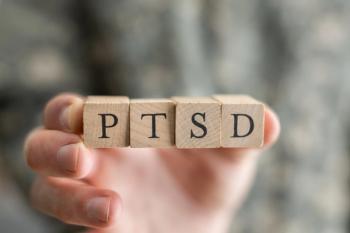
Polypharmacy, PTSD, and Accidental Death From Prescription Medication
The New York Times of February 14 carries the disturbing news of an alarming increase in deaths from accidental overdose among our active duty military personnel and our war veterans.
PTSD/pain patients are often prescribed a combination of psychotropics that may include--one antidepressant, one antipsychotic, one antianxiety, one sleep, and one pain medicine. Sometimes, the enormous medication burden is worsened even further--either by the simultaneous prescription of more than one drug from a given class or the additional self medication effected by the sharing of pills among patients.
Individual psychotropic drugs can have serious side effects--in excessive combination they sometimes threaten respiratory and cardiac function in a potentially lethal way. And the whole is even more dangerous than the sum of its parts since the medications can interact to increase each other's blood levels. Prescription drugs are overtaking illegal drugs as the primary cause of accidental overdose and death.
To its credit, the military is catching on and beginning to initiate procedures to restrict and review heedless and excessive polypharmacy. But this is a tough problem with no ready solutions. Some of the factors involved are:
1. The over prescription of multiple drugs that is also rampant in civilian life. There is no research literature to guide and restrain polypharmacy--so it becomes subject to individual physician whim, often under patient pressure for relief.
2. PTSD has no effective medication treatment, encouraging the potentially dangerous scatter shot approach of treating the individual symptoms each individually with its own medication.
3.The recent ubiquity and carelessness of prescription of dangerous pain medications that resulted as an over-compensation by the military after it was previously criticized for being too sparing in their use.
4. Because they are legal, accessible, and cheap, pain medications are now an attractive alternative to illegal recreational drug use--but with dangerous consequences given their interaction with other psychotropic drugs.
5.The tendency to always add and never sunset medications leads to the continued use of drugs that have not been effective, but will add on to the cumulative and interacting side effects.
6. Chasing the side effects of one drug by adding another to deal with them--eg if an antidepressant causes anxiety or insomnia it is usually a mistake to add yet another potentially harmful pill to deal with these side effects rather than reducing the dose or trying another antidepressant.
7. A shortage of mental health personnel that results in pill pushing rather than the easy access to the one treatment with clear efficacy for PTSD- cognitive behavior therapy.
8. Forgetting,the Hippocratic injunction of "FIRST DO NO HARM." This evolved in ancient Greece specifically to discourage practitioners from being overly aggressive in using dangerous treatments for conditions that are not responding (and may not respond well) to existing interventions. It is important to recognize that sometimes the treatment becomes worse than the disease. This is exactly our modern dilemma with some cases of PTSD where restraint is safer and saner than unreasonable treatment perfectionism and optimism-- which can be costly and sometimes even lethal.
None of these problems will be easy to solve, but some immediate corrective steps seem obvious:
1. Greatly enhance the availability of CBT. If it is too expensive or difficult to recruit trained mental health professionals, train the needed cohort of medics and paraprofessionals. CBT is readily teachable to those with limited previous training.
2. Educate doctors on the risks and limitations of polypharmacy for both PTSD and for pain syndromes, and especially the combination of both.
3. Require special explanations from physicians whenever they prescribe more than three psychotropic medications, or prescribe higher than standard dosages, or prescribe drugs that have significant interactions, or prescribe simultaneously two drugs from the same class.
4. Require automatic, thorough quality assurance auditing to ensure there are adequate reasons for exceptions.
5. Pharmacies should routinely use available drug interaction algorithms to spot dangerous doses and drug combinations and to alert clinicians.
6. Readily available detoxification and rehabilitation should be provided for those who have become addicted to prescription medications and/or other addictive substances.
This problem of prescription overdose in the military has its parallel in civilian life. The tragic overdose victims in both spheres represent canaries in the coal mine--only the most obvious victims of what has become our national orgy of over using psychotropic drugs.
Newsletter
Receive trusted psychiatric news, expert analysis, and clinical insights — subscribe today to support your practice and your patients.














